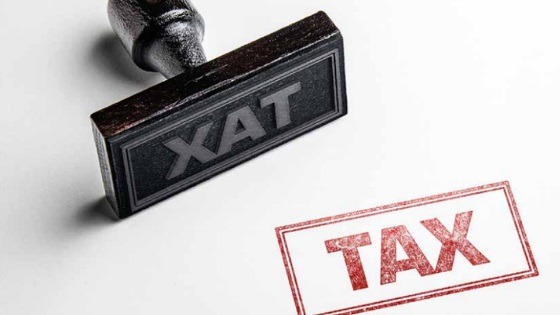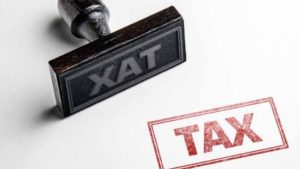Planning for tomorrow, today
https://www.ellisbates.com/wp-content/uploads/2020/12/Planning-for-tomorrow-today-blog-holder.jpg 560 315 Jess Easby Jess Easby https://secure.gravatar.com/avatar/0e2a278e0eef1defdd7ee9d0ae7bb398?s=96&d=mm&r=g4 pension facts to help you create a happy and wealthy retirement.
 The future may seem far away. Regardless of your retirement goals, there are things you can do to increase your chances of success.
The future may seem far away. Regardless of your retirement goals, there are things you can do to increase your chances of success.
It is important to look objectively at your plans and adapt them as your priorities change over the years and you go through different life events.
Your retirement will be as individual as you are and it may arrive earlier than you had anticipated. Time really does fly. Planning ahead is almost certainly going to give you more choice and freedom and pensions can be the most tax-efficient way to save for your retirement.
1. Tax Relief
Most UK taxpayers receive tax relief on their pension contributions, which means that the Government effectively adds money to your pension pot.
Basic rate tax relief: The pension scheme administrator will claim the basic rate tax relief for you from HM Revenue & Customs (HMRC). With basic rate Income Tax at 20%, for every £80 you pay into the pension plan you receive basic tax relief of £20 which is also paid into your plan. The total amount paid into the plan is therefore £100.
Scottish taxpayers and tax relief: Scottish taxpayers receive tax relief based on Scottish Income Tax rates and bands. If you pay tax at the Scottish starter rate, HMRC will not ask you to repay the extra tax relief claimed by the pension scheme administrator.
Welsh taxpayers and tax relief: From 6 April 2019, the Welsh Assembly has devolved powers to set their own Income Tax rates. Currently they have set the rates at the same level as the UK rates.
Please note that the Scottish and Welsh rates may change in the future
Higher rate and additional rate tax relief: Intermediate, higher or top rate tax payers may be able to claim further tax relief from HMRC. If you are eligible for further tax relief on your payments, you can ask HMRC to change your tax code by contacting them or you can complete a Self-Assessment Tax Return after the tax year has ended.
2. Employer Contributions
The Government introduced auto-enrolment as a way of helping employees save for retirement. It means that employers must automatically enrol certain staff into a workplace pension scheme.
When you pay into a workplace pension, your employer and the Government also contribute. The amount paid depends on your employer’s pension scheme and your earnings, but minimum contribution rates are set.
Unlike other ways of saving, a workplace pension means you aren’t the only one putting money in. Your employer has to contribute too, as long as you earn over £6,240 a year. You will also receive
a contribution from the Government in the form of tax relief. This means some of your money that would have gone to the Government as income tax, goes into your workplace pension instead.
You and your employer must pay a percentage of your earnings into your workplace pension scheme. The earnings trigger is one of the three key factors which ultimately governs who gets enrolled into a workplace pension scheme through automatic enrolment (the existing threshold is £10,000 for the tax year 2020/21, which runs from 6 April to 5 April the following year).
Under auto-enrolment schemes, you make contributions based on your total earnings between £6,240 (Lower limit qualifying earnings band) and £50,000 (Upper limit qualifying earnings band) a year before tax.
Your total earnings include:
- salary or wages
- bonuses and commission
- overtime
- statutory sick pay
- statutory maternity, paternity or adoption pay
From April 2019 the amount of total minimum contributions increased to 8% – your employer will contribute 3% and you will contribute 5%. These amounts could be higher for you or your employer because of your pension scheme rules. They’re higher for most Defined Benefit pension schemes.
In some schemes, your employer has the option to pay in more than the legal minimum. In these schemes, you can pay in less as long as your employer puts in enough to meet the total minimum contribution.
3. Flexible access
A Defined Benefit pension scheme pot is highly flexible from age 55. Almost all pensions allow you to take some of your money as tax-free cash. With this option, you can take some or all of your 25% tax-free cash first. What’s left in your pension pot remains invested, giving it a chance to grow; however, as with all investments, your money can go down as well as up.
After you’ve taken all of your tax-free cash, any money you take out will be subject to tax. This means that you can take money from your tax-free amount first and then take the taxable amount when you need it. Remember, you don’t have to take all of your tax-free cash in one go.
To help you minimise the tax you pay, you can take the taxable money whenever you like. So, for example, you can take it over a number of different tax years. This spreads it out, and if you do it this way it could help keep you in a lower tax bracket.
4. Effects of compounding
While it is never too late to start saving and planning for retirement, the earlier you start, the better. Starting earlier means more time for your savings to benefit from the effects of compounding returns. Conversely, the longer you wait, the less time you have for your money to grow and the harder you’ll have to work to reach your retirement goals.
The basic concept is simple. Compounding returns is where the profits you earn on your money are re-invested and start earning more money, which is then re-invested again and so on. With compound returns, it’s less about how much you can afford to put aside and more about for how long the money has time to grow, with your money snowballing into a pot.
Are you approaching retirement, or about to retire?
In the years leading up to retirement, you might start to wonder if you have saved enough to retire comfortably and thought about everything you need to consider. Are you ready to retire? Do you know what you might get? Do you understand your income options, tax and your State Pension? Please speak to us to discuss your options.
Accessing pension benefits early may impact on levels of retirement income and your entitlement to certain means tested benefits and is not suitable for everyone. You should seek advice to understand your options at retirement.







 Nearly £20 Billion Unclaimed Money And Growing
Nearly £20 Billion Unclaimed Money And Growing
 Time to review your financial plans with a financial check-up?
Time to review your financial plans with a financial check-up?

 Investors
Investors



 Annual and lifetime limits
Annual and lifetime limits
 Things you can do to increase your chances of success
Things you can do to increase your chances of success